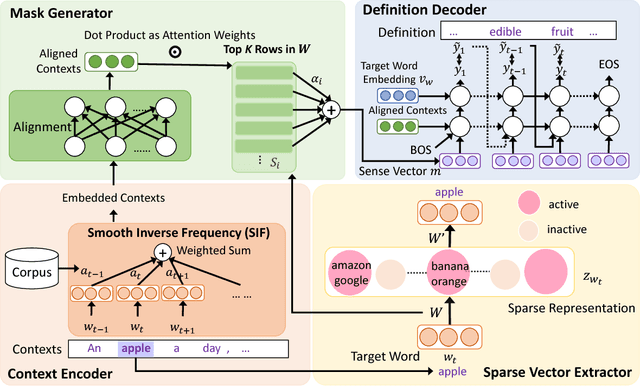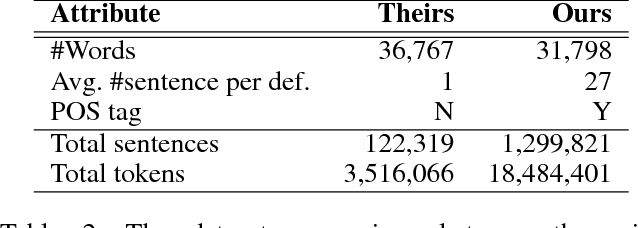xSense: Learning Sense-Separated Sparse Representations and Textual Definitions for Explainable Word Sense Networks
Paper and Code
Sep 10, 2018



Despite the success achieved on various natural language processing tasks, word embeddings are difficult to interpret due to the dense vector representations. This paper focuses on interpreting the embeddings for various aspects, including sense separation in the vector dimensions and definition generation. Specifically, given a context together with a target word, our algorithm first projects the target word embedding to a high-dimensional sparse vector and picks the specific dimensions that can best explain the semantic meaning of the target word by the encoded contextual information, where the sense of the target word can be indirectly inferred. Finally, our algorithm applies an RNN to generate the textual definition of the target word in the human readable form, which enables direct interpretation of the corresponding word embedding. This paper also introduces a large and high-quality context-definition dataset that consists of sense definitions together with multiple example sentences per polysemous word, which is a valuable resource for definition modeling and word sense disambiguation. The conducted experiments show the superior performance in BLEU score and the human evaluation test.
 Add to Chrome
Add to Chrome Add to Firefox
Add to Firefox Add to Edge
Add to Edge